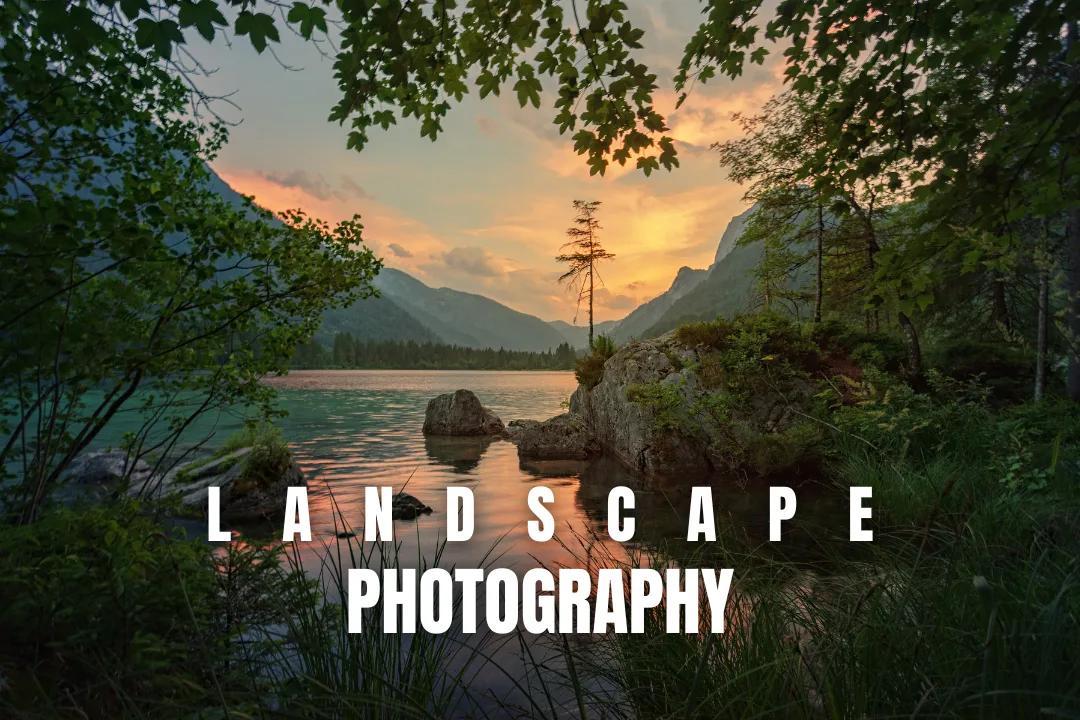LANDSCAPE PHOTOGRAPHY is at the same time one of the easiest and most difficult subjects to approach. It is easy because landscapes are so familiar and accessible all around us, and by now most of the obvious scenic views are cataloged tourist attractions with established viewpoints. In addition, landscapes are permanent; they don’t move, and so all that is necessary is to get there with a camera. Finally, for the simplest shot, there are no extreme technical difficulties.
Despite this, there is an outstanding difference between the ordinary “postcard” views and the finest creative landscape photographs. Many casually-conceived photographs of interesting views that stimulated the photographer turn out to be disappointing, failing to capture the essence of the scene. This is precisely because landscapes are such familiar, accessible subjects. Many photographers do not put a great deal of effort into a shot, yet to lift a landscape photograph out of the ordinary requires considerable perception and technique.
The first major problem is that most people react to a scene in an intuitive way without being able to pinpoint exactly what elements appeal to them; they form an overall impression of which the visual element may be only a part. The wind, the sounds, the smells, the relationship of distant mountains to nearby rocks—all these things are the landscape, but the task of the photographer is to isolate the important ones and somehow convey them in a purely visual way. A casual snapshot usually fails in this. Apart from any other faults, it may include too much in its frame, cluttering up the scene, or it may exclude elements that forethought would have indicated were crucial.
The first step is to decide precisely what it is about a particular landscape that characterizes it, defining the nature of the subjective impression that Ansel Adams, probably the finest of landscape photographers, called “the personal statement”. Here there are no rules. It may be the inherently spectacular nature of the view—the Grand Canyon, for instance—or it may be simply the play of light and shade.
It could be the lushness of fields and corpses in summer. What is important is to maintain a logical approach. In most cases, the scene is not going to change in a few minutes, so it is worth taking time to think about it. Adams emphasized the importance of what he called “visualization”—anticipating the shot even before setting up his camera.
Different Approaches of LANDSCAPE PHOTOGRAPHY
There are some useful compositional techniques. The relationship of nearby objects to a distant scene, such as ripples in a sand-dune to a desert horizon, is often extremely interesting. It involves the viewer and can bring completeness to the landscape. By using a wide-angle lens and a low viewpoint, this can be conveyed in a wide-field view.
A telephoto lens can be used to isolate given elements and will compress perspective, making distant features more dominant in relation to nearer objects. It can give a more remote, detached feeling and is often excellent for selecting items to give abstract patterns.
In landscape, as in other forms of photography, a simple rule can be applied in most instances:less is more”. That is, a detail can sometimes convey more than an overall view. It is, however, easy to overdo this approach, and it often works best when detailed photographs are set alongside more open shots.
The relationship between the land and the sky is an important factor the horizon is probably the strongest line dividing up the picture frame and in interesting weather conditions, it is worth experimenting with different proportions of sky to land. With dynamic clouds dominating the composition over just a thin strip of land, an entirely different feeling is created, often more majestic. These sky-land variations can also be applied to water and land, and to water and sky.
Equipment and materials for LANDSCAPE PHOTOGRAPHY
Because careful composition is central to landscape work, a tripod is useful. It is essential with a telephoto lens or in a wide-field approach where obtaining maximum depth of field requires a slow shutter speed. More often than not, sharpness is desirable across the whole field, especially in a representational photograph. Filters have an important role in landscape photography, and in black-and-white, they allow a large measure of control over different elements. The most frequent need is to darken a blue sky, very often to emphasize cloud patterns.
The relationship between colors in a landscape, such as grass and red rocks, can also be manipulated with appropriate filters. A polarizing filter can reduce reflections, and with color film is the only way of darkening a blue sky (apart from graduated filters, which can only be used with a straight horizon line). UV filters reduce haze in distant and mountain views.
Timing for LANDSCAPE PHOTOGRAPHY
The beauty of landscape work is in its variety—even one viewpoint can provide infinite possibilities, depending on the weather, time of day, and season. Usually, the photographer has a limited choice in this respect; few people can afford the time to make several visits to a location in order to capture the right conditions. Nevertheless, within the constraints, the photographer should anticipate the appearance of a scene at different times and try to work to the preferred one. As a general rule, sunrise and sunset are good times.
Then, a wide variety of lighting conditions are obtained in just one or two hours, giving warm colors and low-angled lighting that shows up textures. The flat lighting of the midday sun, particularly in the tropics, is often hard to cope with adequately and is usually more satisfactory with inherently strong shapes, tones and colors. Dull, overcast skies are an even more severe problem, for although the diffuse lighting gives accurate color rendition to everything, the quality of light is formless, and the contrast between sky and land is too high to record both at a proper exposure. A graduated filter may compensate for this extreme contrast.
Adverse conditions for LANDSCAPE PHOTOGRAPHY
Landscapes do not always present themselves under perfect photographic conditions. Bad weather may be immensely frustrating to a photographer who can well imagine how things would appear at a better time, but adverse conditions can provide a challenge and an opportunity for unusual and original photographs (after all, driving hail or a dust storm are precisely the conditions when most photographers pack up and leave). Also, from a purist’s point of view, such conditions are an essential element in the landscape’s profile.
Bad weather, rain, hail, snow and dust, show the landscape in its more violent moods, but for the photographer who is looking for an original treatment of a well-known scene, they offer many possibilities. The image can change constantly and rapidly under these conditions, and fast reactions are needed. The one essential precaution is to protect your equipment.
Earth’s extreme environments, such as mountains, deserts and rain- forests, are the least accessible, yet they offer the most dramatic landscapes. In particular, the absence of people gives more scope to the photographer. To anyone seriously interested in landscape work, a visit to one of these regions is essential and can give a concentrated opportunity to develop ideas. Each has its own special photographic problems, and all of them, as harsh environments, need to be approached with common sense and caution.
The mountain photographer does not have to be a mountaineer, but without rock- and ice-climbing skills, many shots will inevitably be missed. UV scattering at high altitudes is considerable, and a strong UV filter is essential. A telephoto will clearly suffer more than a wide-angle lens. The bonus of high altitudes is clear air, fine visibility (but not all the time!) and a viewpoint that often permits shots down onto clouds. At high altitudes, just moving can be a great effort. The low temperatures can affect the mechanical operation of the camera. Snow, even at low altitudes, is a special photographic problem. Realistic rendering is quite difficult, and both over and underexposure are common errors.
Deserts offer different problems, chiefly dust and heat. Use a clear lens filter to protect the lens and keep equipment in an airtight case when it is not being used. Your camera case should be white or silvered and kept in the shade as much as possible. Sand dunes, which are not quite as typical of deserts as many people imagine, are particularly interesting in low-angled sunlight, which reveals the delicate texture of ripples and shows the pattern of crests. In this respect, they are similar to snow. In the predawn, or after sunset, the effect is more subtle.
Rainforests, covering 3 million square miles of the Amazon Basin and large areas of the African and Asian tropics, are an exciting, largely unexplored region but pose some photographic difficulties. Characterized by dense stands of tall hardwood trees, they offer limited vistas and very low levels of illumination. High rain-forest has an atmosphere of cathedral gloom, which can be expressive but makes long exposures with a tripod practically essential. Open views are generally possible only on river banks and cliffs. Photographic possibilities are much harder to find in rain-forests than in mountains or deserts, but as these regions have been relatively ignored by photographers, the opportunity is there.
The combination of heat and high humidity in the rain-forest can be quite destructive to film and equipment. Once again, an airtight camera case is important, and a desiccating agent such as silica gel should be packed with the cameras. Look carefully at the lenses; even inside a rash of small spots can be the first sign of fungus, which literally etches the glass and can ruin a lens.
Feel free to share your experiences or questions in the comments below! and don’t forget to share them with friends and others who might benefit! Save Consumerviews in your bookmark for easy access, and follow our Facebook Page Consumerviews India for more articles like this.
Also Read
Photography: exploring different genres & different element of Great Images














0 Comments